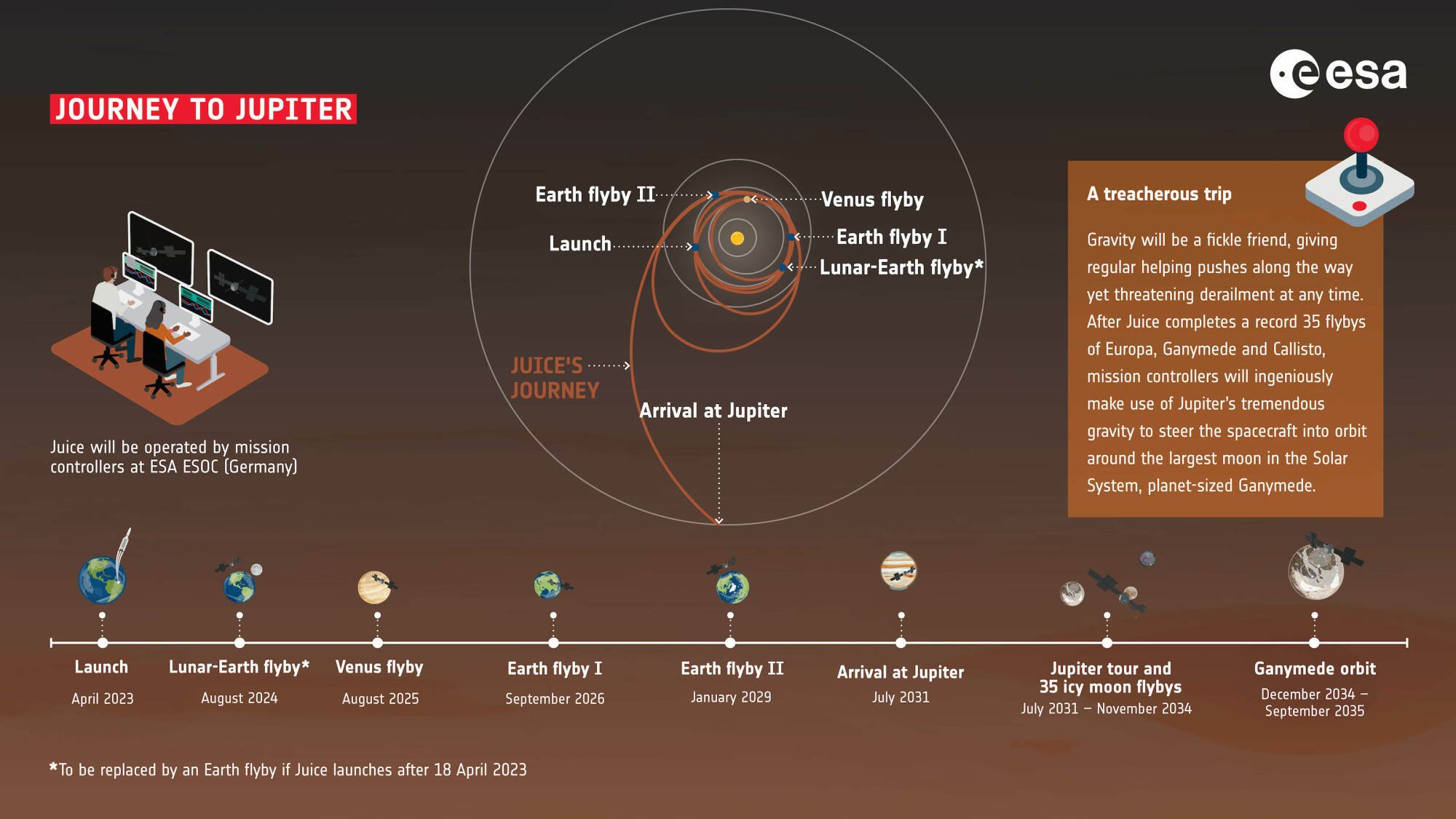
To slingshot through the solar system, a spacecraft zipped between Earth and the moon.
The European Space Agency has released a time-lapse video of the endeavor, which is part of a trajectory to propel its Jupiter Icy Moons Explorer (Juice) spacecraft to Jupiter.
“Timelapse! Volume up, sit back and enjoy #ESAJuice’s lunar-Earth flyby in all its glory,” the space agency posted online.
In the first-ever lunar-Earth flyby, the spacecraft successfully exploited the large objects’ gravity to put it on a course to Venus, where it will arrive for another flyby, and slingshot, in 2025. The Juice craft will then fly by Earth twice more as it escapes to the distant, icy solar system. Juice is expected to arrive at Jupiter in 2031, where it will swoop by 35 of the gas giant’s icy moons.
You can watch the time-lapse below. You’ll spot the spacecraft, with its antennae and instruments, in the foreground of the moon and Earth vistas.

Credit: ESA (acknowledgement: work performed by ATG under contract to ESA)
The Juice spacecraft wields two large cross-shaped solar panels, the biggest ever built for an interplanetary mission, ESA explains. That’s because solar radiation at distant Jupiter, which is on average 484 million miles from the sun, is 25 times weaker than on our planet.
“This makes JUICE the largest ‘solar power plant’ in the Solar System,” ESA wrote. It’s a whopping 71 feet (21.7 meters) wide.
The mission will scrutinize worlds like Europa, an ice-blanketed moon suspected to harbor a voluminous sea beneath its ice shell, as well as the large moons Ganymede and Callisto. Ganymede, which is larger than Mercury, is Juice’s primary target, and the spacecraft won’t just speed by this moon — it will orbit it. Like Europa, Ganymede is stretched and compressed by the nearby massive gas giant Jupiter, a process that generates heat.
“This heat could drive some tectonic activity and provide one of the necessary conditions for life to emerge: a source of energy,” ESA explains.




















0 Comments